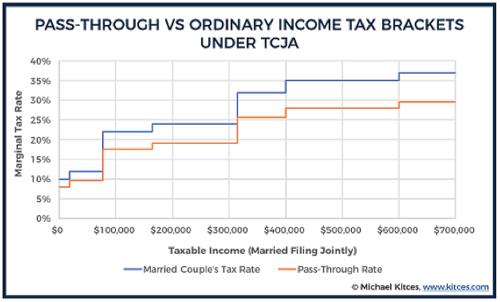Dear Clients & Friends of The Center:
I hope that this letter finds you enjoying the start of a New Year. Major tax reform, Federal Reserve monetary policy decisions and geopolitical uncertainty already consume headlines and should present opportunities for planning in 2018.
Our team is always analyzing. Today we are discussing the income and estate tax changes, how they might affect the economy and financial markets, as well as the planning opportunities that you may want to consider in your personal planning. We look forward to sharing our insights in the coming weeks and throughout the year. However, before fully turning the page to the New Year, we would like to share The Center’s 2017 Review with you, our stakeholders.
Team – Your Team
For a professional services practice like The Center, success starts and ends with people. The people we serve; our clients, and team members. Once again, we have added talented new team members to serve our growing clientele. These folks understand that success is earned each and every day – sometimes through major breakthroughs but mostly from doing the right thing minute after minute, hour-by-hour, day-by-day, year by year by always putting our clients’ needs first. Client service is deeply woven into our culture as we work tirelessly to help you accomplish your life goals and achieve confidence and peace of mind regarding your financial affairs.
Please visit our website at www.CenterFinPlan.com for additional information on our entire team. Below is a brief summary of our new team members:
Experienced and talented financial planners Peggy Hall Davenport, CFP®, Bob Ingram and Jacki Roessler, CDFA® joined our Financial Planning Team.
The Client Service Team welcomed Andrew O’Laughlin, Abigail Fischer, and Sarah McDonell.
James Brown joined us as our new Information Technology Manager.
Internships, under the direction of Jaclyn Jackson, continue to be an important ingredient of The Center. Military veteran and then Oakland University student Kevin Kelley joined as an intern and moved to full time status after graduation. University of Michigan student DewRina Lee spent the summer with us and we just welcomed Butler University student Luke Renchik over winter break.
We said good-bye to a few team members including Clare Lilek who moved to Chicago to attend law school at Chicago-Kent College of Law.
Most recently we just welcomed a new receptionist, Andrea Tomaszewski.
These folks understand and appreciate that great service is viewed as an opportunity, and it happens everywhere at The Center regardless of title or function. We hope that you have a chance to get to know our new team members in the coming year.
Keeping You Informed:
In addition to diligently monitoring investments, we continue to keep in touch in between calls and annual review meetings via a multitude of mediums. In 2017, we shared our knowledge and technical excellence with you, our clients, as well as other professionals and the communities in which we live and serve. Our team hosted webinars (14) on a variety of financial planning and investment topics throughout the year. We once again held live events on Investment Market Outlook and Medicare planning. Our entire team continues to be avid writers so as to keep you informed on timely and timeless topics via our blog posts (look for our Tax series rolling out as I write). Lastly, some of you were able to join us for some fun at our sponsored Detroit Chamber Winds & Strings concerts, Detroit Bus Tour, and networking events with other professional firms.
In 2017, our team were sought out speakers and community leaders. Matt Trujillo, CFP®, Nick Defenthaler, CFP® and Gerri Harmer presented at the Michigan Association of CPA’s annual CE day sharing their knowledge on Solo 401k and defined benefit cash balance plans. Sandy Adams, CFP® continues to be a leader in the Elder Care Community and Wayne State University's Institute of Gerontology in addition to teaching at Schoolcraft College. Melissa Joy, CFP®, CDFA® was a presenter at the Raymond James National Conference. Matt Chope, CFP® was a moderator at a national wealth management conference. Matt Trujillo, CFP® and Sandy Adams, CFP® presented to employees at DTE Energy. Nick Defenthaler, CFP® spoke on Social Security strategies at the Wixom, Brighton, and South Lyon libraries. And, Tim Wyman, CFP®, JD shared his knowledge on financial transitions at Right Management.
Record Numbers Once Again
In 1985, our founders wanted to build and create a specialized team who could serve clients in a different, better way. The concept of financial planning was novel. Starting with a team of three, our growth has been continuous and measured over the years. Growth for us is more of an outcome than a stated goal. Our clients and professional partners continue to be our biggest advocates, a status we do not take for granted. The Center currently has 29 team members serving roughly 960 clients.
Our client assets under management continues to grow, now exceeding $1.18 billion (that’s US Dollars not Bitcoin). The Center is in a solid financial position with adequate reserves. This strong financial position allows us to reinvest in our current team and consider strategic investments in technology and human capital for the benefit of you, our clients. Perhaps most importantly, a strong financial position allows us the freedom to think long term as we have just embarked on our Vision 2030 that we expect to finalize in 2018.
Technology
Technology continues to play an increased role in our ability to provide world-class service. We also understand and appreciate that technology alone does not replace the human touch. Last year, I shared a significant change in that we began implementing a new Client Relationship Management system. While this is behind-the-scenes technology, workflows and dialogues have helped us…well, help you. We continued to commit significant time and resources on training for our team to know and provide the best service experience possible for both clients and team members.
In 2017, we have made another major technology commitment with expectations to roll out mid-2018. Tamarac’s Advisor View will provide greater reporting capabilities as well as online dashboards and vaults. The goal is to more effectively communicate with you about your investments and financial picture. For those in the tech industry – I trust that you can appreciate it when I say more to come. :)
Awards & Recognition
In 2017, we were fortunate to receive a variety of Awards & Recognition. Once again, we received the Crain’s Detroit Cool Places to Work recognition – showing up at #7 this year. Awards such as this allow us to recruit, and even be recruited by, extremely talented new team members that increase our capabilities to serve you. The practice also received recognition on the Financial Times FT 300 List* as a top national Registered Investment Advisor as well as the Best and Brightest Health & Wellness award, among others.
Two of our financial planners received special recognition in 2017. Nick Defenthaler received mention in the Forbes – Top NexGen Advisors list** and planner/partner Melissa Joy was selected as a Top Wealth Adviser Mom Award recipient***.
Lastly, Director of Investment, Angela Palacios accepted a team award from Investment News as part of their Practice Management/Technology Award in recognition of our commitment to time proven systems and processes.
Summary
It is an exciting time to be a part of The Center. We thank you, our clients, professional partners and friends, for your continued confidence and trust. It is something we work hard at everyday – it’s what we love to do. As we enter our 33rd year, The Center is on solid footing. We continue to operate in a disciplined manner striving to provide outstanding client service and managing a growing company. To that end, we look forward to working with you in the year to come.
Wishing you and yours a Happy New Year.
Timothy Wyman, CF®, JD
Managing Partner


















